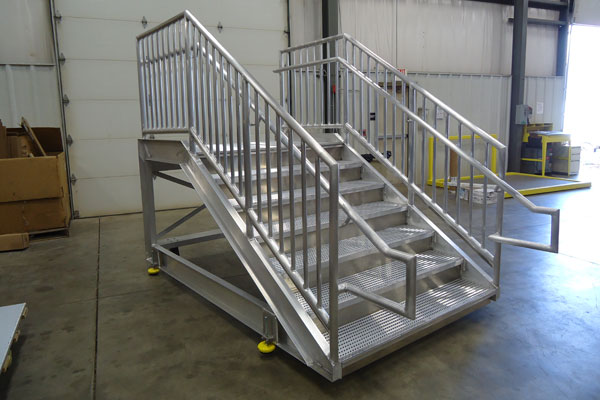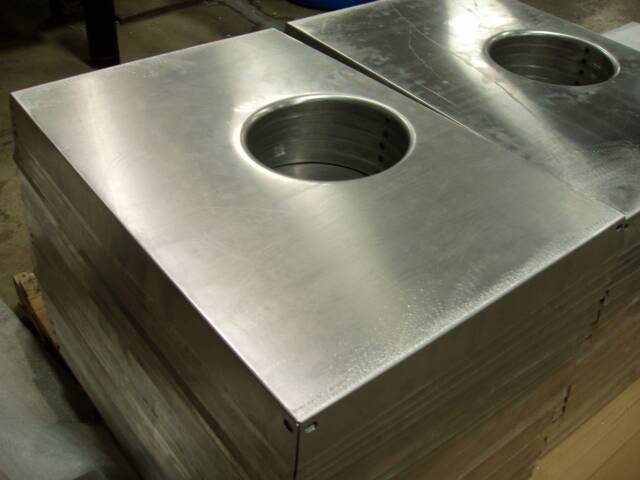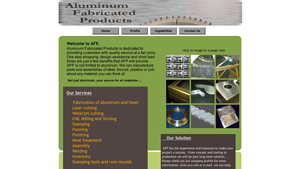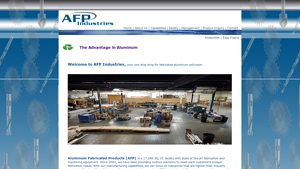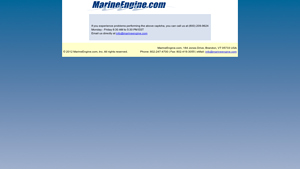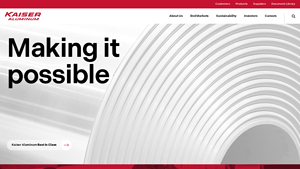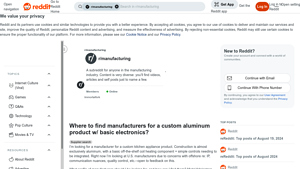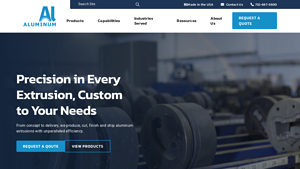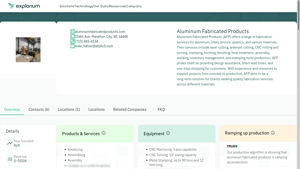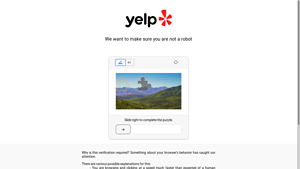Aluminum Fabricated Products Guide: Type, Cost, Top List…
Introduction: Navigating the Global Market for aluminum fabricated products
In an increasingly interconnected world, sourcing aluminum fabricated products can present unique challenges for international B2B buyers. Whether you’re operating in the dynamic markets of Africa, South America, the Middle East, or Europe, the complexities of selecting the right suppliers, understanding diverse applications, and managing costs are critical to your success. This guide aims to navigate these complexities, providing comprehensive insights into the aluminum fabrication landscape.
From identifying various types of aluminum products to understanding their applications across industries such as automotive, aerospace, and construction, we cover essential aspects that inform your purchasing decisions. Moreover, we delve into effective supplier vetting processes, ensuring you can assess quality, reliability, and compliance with international standards.
By equipping you with the knowledge needed to make informed choices, this guide empowers B2B buyers to enhance operational efficiency and drive value in their projects. With a focus on actionable insights tailored to the specific needs of regions like Nigeria and Saudi Arabia, you’ll find the tools necessary to thrive in the global market for aluminum fabricated products. Whether you’re seeking to innovate or streamline your supply chain, our guide serves as a vital resource in your pursuit of excellence.
Understanding aluminum fabricated products Types and Variations
| Type Name | Key Distinguishing Features | Primary B2B Applications | Brief Pros & Cons for Buyers |
|---|---|---|---|
| Aluminum Extrusions | Custom shapes, lightweight, corrosion-resistant | Construction, automotive, industrial | Pros: Versatile, easy to fabricate. Cons: Initial tooling costs can be high. |
| Aluminum Sheet Metal | Thin, flat pieces, can be easily cut and shaped | Aerospace, manufacturing, packaging | Pros: Cost-effective, lightweight. Cons: Limited structural strength compared to thicker materials. |
| Aluminum Welding Fabrications | Strong joints, customizable designs | Marine, automotive, construction | Pros: High strength, tailored solutions. Cons: Requires skilled labor, potential for defects. |
| Aluminum Castings | Complex shapes, high precision, durable | Aerospace, automotive, consumer goods | Pros: Excellent dimensional accuracy. Cons: Higher production time and cost. |
| Aluminum Assemblies | Pre-assembled parts, ready for installation | Electronics, machinery, automotive | Pros: Saves assembly time, reduces labor costs. Cons: May limit customization options. |
What Are Aluminum Extrusions and Their B2B Benefits?
Aluminum extrusions are created by forcing heated aluminum through a die to produce custom shapes. Their lightweight and corrosion-resistant properties make them ideal for a variety of applications, including construction and automotive sectors. For B2B buyers, the versatility of aluminum extrusions allows for innovative design solutions. However, initial tooling costs can be a barrier, particularly for smaller production runs.
Why Choose Aluminum Sheet Metal for Your Business Needs?
Aluminum sheet metal is characterized by its thin, flat form, which can be easily cut, bent, and shaped to meet specific project requirements. Commonly used in the aerospace and manufacturing industries, it offers a cost-effective solution for lightweight applications. Buyers should consider the balance between cost and structural integrity, as thinner sheets may not provide the strength required for certain applications.
How Do Aluminum Welding Fabrications Enhance Structural Integrity?
Aluminum welding fabrications involve joining aluminum pieces through welding, resulting in strong, customized designs. This method is particularly useful in marine and automotive applications where strength and durability are paramount. While welding allows for tailored solutions, it requires skilled labor to avoid defects, making quality assurance a critical consideration for buyers.
What Advantages Do Aluminum Castings Offer for Complex Designs?
Aluminum castings are produced by pouring molten aluminum into molds, allowing for intricate shapes and high precision. This manufacturing method is prevalent in aerospace and automotive industries due to its ability to produce parts with excellent dimensional accuracy. However, the production time and costs can be higher compared to other aluminum products, making it essential for buyers to assess their project timelines and budgets.
How Can Aluminum Assemblies Streamline Your Production Process?
Aluminum assemblies consist of pre-assembled components, making them ready for immediate installation in various applications, including electronics and machinery. This can significantly reduce assembly time and labor costs, appealing to businesses looking for efficiency. However, buyers should be aware that opting for pre-assembled solutions may limit customization options, which could be a crucial factor for specific projects.
Key Industrial Applications of aluminum fabricated products
| Industry/Sector | Specific Application of aluminum fabricated products | Value/Benefit for the Business | Key Sourcing Considerations for this Application |
|---|---|---|---|
| Aerospace | Aircraft components such as frames and skins | Lightweight yet strong materials enhance fuel efficiency | Compliance with aviation standards and certifications |
| Automotive | Custom parts for vehicles, including chassis and body panels | Reduces overall vehicle weight, improving performance | Precision machining capabilities and material specifications |
| Construction | Structural elements like beams and cladding | Corrosion resistance and longevity in harsh environments | Ability to meet local building codes and project timelines |
| Packaging | Custom aluminum containers and packaging solutions | Lightweight and recyclable, reducing shipping costs | Understanding of packaging regulations and sustainability goals |
| Marine | Boat hulls and fuel tanks | Durability and resistance to corrosion in marine environments | Customization options for specific vessel designs |
How Are Aluminum Fabricated Products Used in Aerospace Applications?
In the aerospace sector, aluminum fabricated products are critical for manufacturing aircraft components, such as frames and skins. These products are designed to be lightweight yet strong, which significantly enhances fuel efficiency and overall performance. International buyers, particularly in regions like the Middle East and Europe, must ensure that their suppliers comply with stringent aviation regulations and certifications, which can vary by country. This focus on compliance helps mitigate risks associated with airworthiness and safety.
What Role Do Aluminum Fabricated Products Play in the Automotive Industry?
In the automotive industry, aluminum fabricated products are increasingly utilized for custom parts, including chassis and body panels. The lightweight nature of aluminum contributes to reduced vehicle weight, which can lead to improved fuel efficiency and performance. Buyers from South America and Africa should prioritize suppliers with advanced precision machining capabilities, as the automotive sector demands high-quality materials that meet specific engineering standards.
Why Are Aluminum Fabricated Products Essential in Construction?
Aluminum fabricated products serve as essential structural elements in the construction industry, including beams and cladding. Their inherent corrosion resistance and durability make them ideal for use in harsh environments, ensuring longevity and reduced maintenance costs. B2B buyers in Africa and Europe should consider suppliers who can demonstrate compliance with local building codes and project timelines, as timely delivery and quality assurance are crucial in construction projects.
How Do Aluminum Fabricated Products Benefit the Packaging Sector?
In the packaging industry, aluminum fabricated products are used to create custom containers and packaging solutions. Their lightweight and recyclable properties not only reduce shipping costs but also align with sustainability initiatives. Buyers in regions like South America and the Middle East should seek suppliers who understand local packaging regulations and sustainability goals, ensuring that their products meet market demands while minimizing environmental impact.
What Are the Applications of Aluminum Fabricated Products in Marine Industries?
In the marine sector, aluminum fabricated products are commonly used for constructing boat hulls and fuel tanks. The material’s durability and resistance to corrosion are vital for ensuring the longevity of marine vessels, especially in saltwater environments. Buyers from regions such as Saudi Arabia and Nigeria should focus on suppliers who offer customization options to meet specific vessel designs, as well as those who understand the unique challenges posed by marine applications.
3 Common User Pain Points for ‘aluminum fabricated products’ & Their Solutions
Scenario 1: Sourcing High-Quality Aluminum Fabricated Products
The Problem: B2B buyers often face the daunting challenge of sourcing aluminum fabricated products that meet their specific quality standards and technical requirements. In regions such as Africa and South America, where supply chains can be inconsistent, buyers may encounter suppliers who provide subpar materials, leading to product failures or delays in production. This not only affects the quality of the final product but can also jeopardize relationships with end customers.
The Solution: To mitigate this issue, buyers should establish a thorough vetting process for potential suppliers. This includes requesting certifications such as ISO 9001 for quality management and verifying the supplier’s track record in delivering aluminum products that comply with industry standards. Additionally, engage in direct communication with suppliers to discuss specifications, tolerances, and material properties. For instance, consider using a checklist that includes questions about their fabrication capabilities, material sourcing, and past project examples. By ensuring that suppliers can provide detailed documentation and references, buyers can confidently select partners who align with their quality expectations.
Scenario 2: Navigating Custom Fabrication Challenges
The Problem: Many B2B buyers need customized aluminum products tailored to unique specifications, which often leads to miscommunication and design discrepancies. This is particularly prevalent in industries like automotive and aerospace, where precision is critical. Buyers may find themselves frustrated when the delivered product does not match their initial design, resulting in costly delays and rework.
The Solution: To address this challenge, buyers should invest in clear and comprehensive design documentation. Utilize CAD (Computer-Aided Design) software to create detailed drawings that specify dimensions, tolerances, and material requirements. When sending these documents to suppliers, include a cover letter that outlines the project scope and highlights critical aspects of the design. Additionally, consider requesting prototypes or samples before committing to a full production run. This not only helps in verifying the design accuracy but also fosters better collaboration with the supplier, allowing for adjustments based on feedback before final production begins.
Scenario 3: Managing Lead Times and Delivery Schedules
The Problem: Timely delivery of aluminum fabricated products is crucial for maintaining production schedules, yet many B2B buyers experience unexpected delays that can halt operations. Factors such as inadequate supplier communication, fluctuations in raw material availability, and logistical challenges can contribute to these delays, putting pressure on buyers to find quick solutions.
The Solution: To improve lead time management, establish a proactive communication strategy with suppliers. Regularly check in on the status of orders and provide suppliers with a detailed production timeline that includes key milestones. Furthermore, consider building a buffer into your schedule by ordering materials in advance or increasing your stock of critical components. It may also be beneficial to diversify your supplier base across different regions to mitigate risks associated with local disruptions. By fostering strong relationships and maintaining open lines of communication, buyers can better anticipate potential delays and adapt their plans accordingly, ensuring smoother operations.
These strategies will not only alleviate common pain points associated with aluminum fabricated products but also enhance overall supply chain efficiency and product quality.
Strategic Material Selection Guide for aluminum fabricated products
When selecting materials for aluminum fabricated products, it is essential to consider the specific properties and applications that each material offers. Below, we analyze four common aluminum alloys used in fabrication, focusing on their key properties, advantages and disadvantages, and implications for international B2B buyers.
What are the Key Properties of Aluminum Alloys in Fabrication?
-
Aluminum 6061
– Key Properties: Aluminum 6061 is known for its excellent mechanical properties and good weldability. It has a temperature rating of up to 150°C and exhibits moderate corrosion resistance.
– Pros & Cons: This alloy is durable and versatile, making it suitable for various applications, including automotive and aerospace. However, it can be more expensive than other alloys and may require more complex machining processes.
– Impact on Application: Its strength and lightweight nature make it ideal for structural components, but its moderate corrosion resistance may limit its use in highly corrosive environments.
– Considerations for International Buyers: Compliance with ASTM standards is crucial, especially in regions like Europe and the Middle East, where quality regulations are stringent. -
Aluminum 5052
– Key Properties: Aluminum 5052 is renowned for its exceptional corrosion resistance and formability. It can withstand temperatures up to 65°C and is often used in marine applications.
– Pros & Cons: The alloy’s high resistance to saltwater corrosion is a significant advantage for buyers in coastal regions. However, its lower strength compared to 6061 may limit its use in structural applications.
– Impact on Application: It is particularly suitable for applications exposed to harsh environments, such as boat hulls and fuel tanks.
– Considerations for International Buyers: Buyers in South America and Africa should ensure that the alloy meets local marine standards and certifications. -
Aluminum 7075
– Key Properties: Known for its high strength-to-weight ratio, Aluminum 7075 is often used in aerospace applications. It can withstand temperatures up to 120°C and has good fatigue resistance.
– Pros & Cons: Its superior strength makes it ideal for high-stress applications, but it is more expensive and less corrosion-resistant than other alloys. Additionally, it can be challenging to weld.
– Impact on Application: This alloy is best suited for applications requiring high strength, such as aircraft components. However, its limitations in corrosion resistance may necessitate protective coatings.
– Considerations for International Buyers: Compliance with aerospace standards such as JIS and ASTM is critical for buyers in Europe and the Middle East, where regulatory scrutiny is high. -
Aluminum 3003
– Key Properties: Aluminum 3003 is characterized by good workability and moderate strength. It has a temperature rating of up to 100°C and offers decent corrosion resistance.
– Pros & Cons: This alloy is cost-effective and easy to fabricate, making it suitable for a wide range of applications. However, its lower strength limits its use in load-bearing structures.
– Impact on Application: It is commonly used in cooking utensils, storage tanks, and chemical equipment, where moderate strength is sufficient.
– Considerations for International Buyers: Buyers should verify that the alloy meets relevant local standards, especially in regions like Africa, where material quality may vary.
Summary Table of Material Selection for Aluminum Fabricated Products
| Material | Typical Use Case for aluminum fabricated products | Key Advantage | Key Disadvantage/Limitation | Relative Cost (Low/Med/High) |
|---|---|---|---|---|
| Aluminum 6061 | Structural components in automotive and aerospace | Excellent mechanical properties | Higher cost, complex machining | High |
| Aluminum 5052 | Marine applications, boat hulls | Exceptional corrosion resistance | Lower strength than 6061 | Medium |
| Aluminum 7075 | Aerospace components | High strength-to-weight ratio | Expensive, challenging to weld | High |
| Aluminum 3003 | Cooking utensils, chemical equipment | Cost-effective and easy to fabricate | Lower strength | Low |
In conclusion, the selection of the right aluminum alloy for fabricated products is crucial for meeting performance requirements and ensuring compliance with international standards. By understanding the properties and applications of each material, B2B buyers can make informed decisions that align with their specific needs and regional regulations.
In-depth Look: Manufacturing Processes and Quality Assurance for aluminum fabricated products
What Are the Key Manufacturing Processes for Aluminum Fabricated Products?
The manufacturing of aluminum fabricated products involves several key stages that ensure the final product meets the required specifications and quality standards. Understanding these processes is crucial for B2B buyers looking to procure high-quality aluminum products.
Material Preparation: How Is Aluminum Readied for Fabrication?
The first step in the manufacturing process is material preparation, which involves selecting the right aluminum alloy based on the intended application. Common alloys include 6061, 6063, and 7075, each offering unique properties like strength, corrosion resistance, and weldability.
Once the appropriate alloy is selected, it is cut into manageable sizes using techniques such as shearing or sawing. This stage may also involve surface treatments, such as cleaning and anodizing, to enhance the material’s performance characteristics and prepare it for further processing.
Forming: What Techniques Are Utilized in Shaping Aluminum?
Forming is a critical stage where the prepared aluminum is shaped into the desired configuration. Several techniques are employed, including:
- Extrusion: This involves forcing aluminum through a die to create specific cross-sectional shapes. It is widely used for producing profiles and tubes.
- Stamping: This technique utilizes a die to cut and shape aluminum sheets into components, often used in the automotive and packaging industries.
- Bending: Aluminum can be bent into various shapes using press brakes or roll formers, allowing for the creation of complex geometries.
Each forming technique has its advantages and is chosen based on the specific requirements of the product being manufactured.
Assembly: How Are Components Joined Together?
After forming, the next step is assembly, where various components are joined to create the final product. Common methods of assembly include:
- Welding: This is a prevalent method for joining aluminum parts, utilizing techniques like MIG (Metal Inert Gas) or TIG (Tungsten Inert Gas) welding to ensure strong and durable connections.
- Mechanical Fastening: In some cases, components may be joined using screws, bolts, or rivets, particularly when disassembly is required for maintenance or repair.
- Adhesives: Advanced adhesives are also employed for bonding aluminum, especially in applications where traditional methods may compromise the material’s integrity.
Effective assembly is crucial for ensuring that the final product can withstand operational stresses.
Finishing: What Processes Enhance the Appearance and Durability of Aluminum Products?
The finishing stage involves applying treatments to improve the product’s aesthetics and functionality. Common finishing processes include:
- Anodizing: This electrochemical process enhances corrosion resistance and allows for the addition of color to the aluminum surface.
- Powder Coating: A popular method for adding a durable, protective layer that can be customized in various colors and textures.
- Machining: Precision machining may be employed to achieve tight tolerances and specific surface finishes, particularly for components that require intricate features.
A well-executed finishing process not only improves the product’s appearance but also extends its lifespan.
What Quality Assurance Measures Should B2B Buyers Expect?
Quality assurance (QA) is integral to the manufacturing of aluminum fabricated products. B2B buyers should look for suppliers who implement robust QA practices to ensure product consistency and reliability.
Which International Standards Are Relevant to Aluminum Fabrication?
B2B buyers should familiarize themselves with relevant international quality standards, including:
- ISO 9001: This standard outlines the criteria for a quality management system, ensuring that organizations can consistently provide products that meet customer and regulatory requirements.
- CE Marking: Required for products sold within the European Economic Area, it indicates compliance with safety and environmental standards.
- API Standards: For products used in the oil and gas industry, adherence to American Petroleum Institute (API) standards is crucial for ensuring reliability and safety.
Compliance with these standards not only enhances product quality but also builds trust with international buyers.
What Are the Key Quality Control Checkpoints?
Quality control (QC) should be embedded throughout the manufacturing process. Key checkpoints include:
- Incoming Quality Control (IQC): Assessing raw materials for compliance with specifications before production begins.
- In-Process Quality Control (IPQC): Monitoring critical parameters during the manufacturing process to identify and rectify issues in real-time.
- Final Quality Control (FQC): Conducting thorough inspections and tests on finished products to ensure they meet all specifications and standards.
This multi-tiered approach to QC helps mitigate risks and ensures that only high-quality products reach the market.
What Testing Methods Are Commonly Used in Quality Assurance?
Several testing methods are employed to validate the quality of aluminum fabricated products:
- Non-Destructive Testing (NDT): Techniques such as ultrasonic testing, radiographic testing, and dye penetrant testing help identify internal defects without damaging the product.
- Mechanical Testing: Tests such as tensile strength, hardness, and impact resistance are conducted to assess the material’s performance under stress.
- Visual Inspection: A thorough visual examination for surface defects, dimensional accuracy, and overall finish quality.
These testing methods provide valuable insights into the product’s integrity and performance.
How Can B2B Buyers Verify Supplier Quality Control Practices?
B2B buyers must take proactive steps to verify the quality control practices of their suppliers, especially when sourcing internationally. Here are some strategies:
- Supplier Audits: Conducting on-site audits allows buyers to evaluate the supplier’s manufacturing processes, quality systems, and compliance with industry standards.
- Requesting Quality Reports: Suppliers should provide documentation of their quality control processes, including inspection reports and certifications.
- Third-Party Inspections: Engaging independent inspection agencies can provide an unbiased assessment of the supplier’s quality practices and product compliance.
These measures help mitigate risks associated with sourcing aluminum fabricated products from different regions, ensuring that B2B buyers receive reliable and high-quality products.
What Are the Nuances of Quality Control for International B2B Buyers?
International B2B buyers, particularly those from regions like Africa, South America, the Middle East, and Europe, must navigate various nuances in quality control:
- Cultural Differences: Understanding cultural attitudes towards quality and compliance can impact supplier relationships and expectations.
- Regulatory Compliance: Different regions may have specific regulations and standards that must be adhered to, making it essential for buyers to communicate these requirements clearly.
- Supply Chain Considerations: Transportation and logistics can affect product quality, necessitating discussions about packaging and handling to ensure product integrity during transit.
By being aware of these nuances, buyers can foster stronger partnerships with suppliers and enhance their procurement processes.
In conclusion, a comprehensive understanding of manufacturing processes and quality assurance measures is crucial for B2B buyers seeking aluminum fabricated products. By focusing on these aspects, buyers can make informed decisions that align with their quality expectations and operational needs.
Practical Sourcing Guide: A Step-by-Step Checklist for ‘aluminum fabricated products’
Introduction
This practical sourcing guide is designed to assist B2B buyers in procuring aluminum fabricated products effectively. The process of sourcing these products can be complex, given the range of specifications, supplier options, and market dynamics. Following this checklist will help you navigate the procurement landscape and ensure you make informed decisions that align with your business needs.
Step 1: Define Your Technical Specifications
Start by clearly outlining the technical specifications of the aluminum fabricated products you require. This includes dimensions, tolerances, alloy types, and any surface treatments needed. Well-defined specifications prevent misunderstandings with suppliers and ensure that the final products meet your operational requirements.
- Consider the application: Different applications may require specific alloys or machining processes.
- Document everything: Create a detailed specification sheet to share with potential suppliers.
Step 2: Identify Your Budget and Lead Times
Establish a budget that encompasses not only the cost of the products but also any associated shipping and handling fees. Additionally, determine your lead time requirements based on project timelines. This step is crucial as it influences your choice of suppliers and helps in negotiating terms.
- Include contingencies: Factor in potential delays or unexpected costs.
- Communicate timelines: Clearly communicate your deadlines to suppliers to ensure they can meet your needs.
Step 3: Research Potential Suppliers
Conduct thorough research to identify suppliers specializing in aluminum fabricated products. Look for companies with a proven track record in your industry and region, and assess their capabilities and offerings.
- Check online reviews and ratings: Use platforms like LinkedIn or industry-specific forums to gather feedback.
- Request product samples: If possible, obtain samples to evaluate quality before making a commitment.
Step 4: Evaluate Supplier Certifications and Compliance
Verify that potential suppliers hold relevant certifications, such as ISO 9001 or industry-specific standards. Compliance with international quality standards is vital for ensuring product reliability and safety.
- Inquire about quality control measures: Understand how the supplier maintains quality throughout the fabrication process.
- Confirm material sourcing: Ensure that materials used meet regulatory requirements in your region.
Step 5: Assess Manufacturing Capabilities
Evaluate the manufacturing capabilities of shortlisted suppliers. This includes assessing their equipment, technology, and workforce expertise. A supplier with advanced manufacturing capabilities can offer better precision and flexibility.
- Visit the facility if possible: An on-site visit can provide insights into their operational efficiency.
- Ask about production capacity: Ensure they can handle your order volume, especially for large or recurring orders.
Step 6: Request and Compare Quotes
Once you have a shortlist of suppliers, request detailed quotes. Compare these not just on price but also on lead times, payment terms, and after-sales support. This will help you identify the best overall value rather than just the lowest cost.
- Clarify all costs: Ensure quotes include all potential charges, including shipping and handling.
- Negotiate terms: Don’t hesitate to negotiate terms that better suit your financial and operational needs.
Step 7: Finalize Agreements and Monitor Production
After selecting a supplier, finalize the purchase agreement, ensuring all terms are clear and mutually agreed upon. Once production begins, maintain open communication to monitor progress and address any issues that may arise.
- Set checkpoints: Establish milestones for production updates to stay informed.
- Plan for quality inspections: Schedule inspections at various stages to ensure adherence to specifications.
By following these steps, B2B buyers can streamline their sourcing process for aluminum fabricated products, ensuring they secure high-quality solutions that meet their operational demands.
Comprehensive Cost and Pricing Analysis for aluminum fabricated products Sourcing
What Are the Key Cost Components in Aluminum Fabricated Products Sourcing?
When sourcing aluminum fabricated products, understanding the cost structure is vital. The primary cost components include:
-
Materials: The cost of aluminum varies significantly based on market conditions, alloy types, and sourcing methods. Buyers should consider both primary aluminum prices and any additional materials required for specific applications.
-
Labor: Labor costs are influenced by the complexity of the fabrication process and the skill level required. Regions with higher labor costs, such as parts of Europe, may see increased pricing for intricate customizations.
-
Manufacturing Overhead: This encompasses costs related to the operation of machinery, utilities, and facility maintenance. Efficient manufacturing processes can help reduce these costs, which is crucial for maintaining competitive pricing.
-
Tooling: Initial tooling costs can be substantial, particularly for custom orders. This investment is typically amortized over large production runs, so minimum order quantities (MOQs) can significantly impact pricing.
-
Quality Control (QC): Ensuring that products meet specified standards incurs costs related to testing and certification. This is particularly important for international buyers who may require compliance with regional regulations.
-
Logistics: Shipping and handling can add to the total cost, especially for international transactions. Factors such as distance, shipping method, and customs duties should be factored into the total pricing strategy.
-
Margin: Suppliers will add their markup to cover expenses and generate profit. Understanding the market rates and competitive pricing strategies is essential for negotiating favorable terms.
How Do Price Influencers Affect Aluminum Fabricated Products?
Several factors can influence the pricing of aluminum fabricated products, including:
-
Volume and Minimum Order Quantities (MOQ): Larger orders often lead to lower per-unit costs. Suppliers may offer tiered pricing based on order size, making it essential for buyers to assess their needs carefully.
-
Specifications and Customization: Custom designs or unique specifications can lead to higher costs. Buyers should evaluate whether they can standardize components to reduce expenses.
-
Material Quality and Certifications: Higher quality materials or specific certifications (e.g., ISO standards) can increase costs. Buyers should weigh the benefits of enhanced quality against their budget constraints.
-
Supplier Factors: The reputation and reliability of suppliers play a critical role in pricing. Established suppliers may charge a premium for their services, but they often provide better quality and service assurance.
-
Incoterms: The agreed-upon Incoterms (International Commercial Terms) dictate the responsibilities of buyers and sellers regarding shipping, insurance, and tariffs. Understanding these terms is crucial to avoid unexpected costs.
What Are Essential Buyer Tips for Cost-Efficiency in Sourcing?
To optimize costs and ensure a successful sourcing experience, buyers should consider the following tips:
-
Negotiate Wisely: Engage in discussions with suppliers to negotiate pricing based on volume, long-term contracts, or bundled services. Leverage market research to strengthen your negotiating position.
-
Evaluate Total Cost of Ownership (TCO): Beyond the initial purchase price, consider factors like maintenance, durability, and potential waste. A lower upfront cost may lead to higher TCO if the product does not perform as expected.
-
Understand Pricing Nuances for International Buyers: When sourcing from different regions, be aware of currency fluctuations, import tariffs, and local market conditions. This knowledge can help in anticipating costs and making informed decisions.
-
Conduct Supplier Audits: Regularly assess supplier performance, quality, and delivery timelines. This helps ensure compliance with agreed-upon standards and can lead to better pricing negotiations in the future.
-
Stay Informed About Market Trends: Keep abreast of aluminum pricing trends and industry news to make timely purchasing decisions. This proactive approach can help you capitalize on favorable market conditions.
Conclusion
In summary, understanding the comprehensive cost structure and pricing influences of aluminum fabricated products is essential for B2B buyers, particularly in diverse markets like Africa, South America, the Middle East, and Europe. By carefully analyzing cost components, leveraging negotiation strategies, and considering the total cost of ownership, buyers can enhance their sourcing efficiency and achieve better financial outcomes.
Alternatives Analysis: Comparing aluminum fabricated products With Other Solutions
Understanding Alternatives to Aluminum Fabricated Products
In the realm of manufacturing, selecting the right material or method is crucial for achieving operational efficiency and cost-effectiveness. Aluminum fabricated products have established themselves as a reliable choice due to their lightweight properties, corrosion resistance, and versatility. However, it is essential for B2B buyers to consider alternative solutions that may better meet their specific needs or project requirements.
Comparison Table
| Comparison Aspect | Aluminum Fabricated Products | Steel Fabricated Products | Plastic Fabricated Products |
|---|---|---|---|
| Performance | High strength-to-weight ratio, corrosion-resistant | Very strong but heavier; susceptible to rust | Good tensile strength, but less durable under extreme conditions |
| Cost | Moderate initial investment; long-term savings due to durability | Generally lower upfront cost; higher maintenance over time | Low initial cost; limited lifespan can lead to higher replacement costs |
| Ease of Implementation | Requires specialized equipment and skilled labor | Easier to source and fabricate with available local resources | Generally straightforward; can be molded and shaped with less specialized equipment |
| Maintenance | Low maintenance; resistant to wear and tear | Requires regular maintenance and protection against rust | Moderate; can degrade over time and requires replacement |
| Best Use Case | Aerospace, automotive, construction, marine applications | Heavy-duty structures, industrial applications | Consumer products, packaging, and applications requiring lower strength |
Detailed Breakdown of Alternatives
Steel Fabricated Products
Steel is a traditional alternative to aluminum that offers exceptional strength and durability. It is particularly effective in heavy-duty applications where weight is less of a concern. However, steel is prone to rust and corrosion, necessitating regular maintenance and protective coatings. While the initial cost is often lower than aluminum, the long-term expenses related to maintenance can offset these savings. Steel’s availability and ease of fabrication make it a popular choice in many sectors, but it may not be ideal for applications requiring lightweight solutions.
Plastic Fabricated Products
Plastic products present a cost-effective alternative, especially for applications where weight and corrosion resistance are critical. They are easy to mold and shape, making them suitable for a wide range of consumer products and packaging applications. However, plastics generally offer lower tensile strength compared to aluminum and steel, which can limit their use in heavy-duty applications. Additionally, while the initial investment is lower, the need for frequent replacements due to degradation can lead to higher long-term costs. Plastics are best suited for short-term use and applications where weight savings are paramount.
How to Choose the Right Solution for Your Needs
When evaluating alternatives to aluminum fabricated products, B2B buyers should consider their specific application requirements, including performance, cost, and maintenance needs. It is essential to assess the environmental conditions the product will face, the expected lifespan, and the total cost of ownership over time. By aligning these factors with the operational goals of the business, buyers can make informed decisions that enhance productivity and profitability. Ultimately, the right choice will depend on balancing immediate costs with long-term performance and sustainability.
Essential Technical Properties and Trade Terminology for aluminum fabricated products
What Are the Key Technical Properties of Aluminum Fabricated Products?
Understanding the critical technical properties of aluminum fabricated products is essential for B2B buyers to ensure they select materials that meet their operational needs. Here are several key specifications:
-
Material Grade
– Aluminum is categorized into different grades, with common ones including 6061, 6063, and 7075. Each grade offers distinct properties like strength, corrosion resistance, and workability. For instance, 6061 is often used in structural applications due to its good mechanical properties and weldability, while 7075 is preferred in aerospace applications for its high strength-to-weight ratio. Selecting the right grade affects durability and performance in the intended application. -
Tolerance
– Tolerance refers to the permissible limit of variation in a physical dimension or measured value. In aluminum fabrication, tighter tolerances (e.g., ±0.005 inches) may be required for precision components, impacting assembly and function. Understanding tolerance requirements is crucial for B2B buyers to ensure that parts fit correctly and function as intended, reducing the risk of costly rework or failures. -
Finish Type
– The finish applied to aluminum products can significantly influence their aesthetics, corrosion resistance, and surface hardness. Common finishes include anodized, brushed, and powder-coated. Anodizing enhances corrosion resistance and surface hardness, making it suitable for outdoor applications. Buyers should consider the finish type based on the environmental conditions and visual requirements of the final product. -
Weight
– Aluminum is known for its lightweight properties, which is a significant advantage in industries like automotive and aerospace. The weight of fabricated aluminum products can affect shipping costs and ease of installation. Understanding the weight implications can help businesses optimize their logistics and design processes. -
Weldability
– The ability to weld aluminum depends on the alloy and the fabrication process used. Certain grades, like 6061, are more easily welded than others. This property is critical for applications requiring assembly and structural integrity. Buyers must consider the weldability of the selected aluminum grade to ensure compatibility with their manufacturing processes.
What Are Common Trade Terms Used in Aluminum Fabrication?
Familiarity with industry terminology is vital for effective communication and negotiation in B2B transactions. Here are several common terms:
-
OEM (Original Equipment Manufacturer)
– An OEM produces parts or equipment that may be marketed by another manufacturer. In the aluminum fabrication sector, OEMs often require custom components that meet specific design and quality standards. Understanding the OEM relationship is essential for buyers who need to ensure compatibility and compliance with their products. -
MOQ (Minimum Order Quantity)
– MOQ refers to the smallest quantity of a product that a supplier is willing to sell. This term is crucial for buyers to understand as it can impact inventory levels and cash flow. Knowing the MOQ helps buyers plan their orders effectively and negotiate better terms. -
RFQ (Request for Quotation)
– An RFQ is a document that a buyer sends to suppliers to request pricing and terms for specific products or services. It is a critical step in the procurement process, allowing buyers to compare options and make informed purchasing decisions. A well-structured RFQ can lead to more favorable pricing and terms. -
Incoterms (International Commercial Terms)
– Incoterms are a series of pre-defined commercial terms published by the International Chamber of Commerce (ICC) that clarify the responsibilities of buyers and sellers in international transactions. Understanding Incoterms is essential for buyers to manage risk and costs related to shipping, insurance, and customs duties. -
Lead Time
– Lead time is the period between the initiation of an order and its completion or delivery. This term is particularly important in the aluminum fabrication industry, where production schedules can vary significantly based on complexity and customization. Buyers should consider lead times when planning their projects to avoid delays.
By grasping these technical properties and trade terms, B2B buyers can make more informed decisions when sourcing aluminum fabricated products, ensuring that they meet their specific requirements and operational goals.
Navigating Market Dynamics and Sourcing Trends in the aluminum fabricated products Sector
What Are the Current Market Dynamics and Key Trends in Aluminum Fabricated Products?
The global market for aluminum fabricated products is witnessing significant transformation, driven by a surge in demand from diverse sectors, including aerospace, automotive, and construction. Key trends indicate a growing preference for lightweight materials, particularly in the automotive and aerospace industries, where reducing weight translates to improved fuel efficiency and performance. Moreover, the increasing adoption of advanced manufacturing technologies, such as CNC machining and additive manufacturing, is enhancing precision and efficiency in aluminum fabrication processes.
International B2B buyers, particularly from regions like Africa, South America, the Middle East, and Europe, must navigate a complex landscape characterized by fluctuating raw material prices and geopolitical factors. For instance, trade policies and tariffs can significantly impact sourcing strategies. As supply chains become more globalized, buyers are increasingly prioritizing suppliers who offer reliable logistics and timely deliveries. Additionally, the push towards digital transformation is facilitating better collaboration through B2B platforms that streamline procurement processes and enhance transparency.
Emerging markets are also becoming key players in the aluminum fabrication sector, with countries like Nigeria and Saudi Arabia investing in local manufacturing capabilities. This shift not only reduces reliance on imports but also fosters economic growth and job creation within these regions. Therefore, understanding the nuances of local market dynamics, including regulatory environments and cultural factors, is essential for successful sourcing strategies.
How Is Sustainability Influencing Sourcing Decisions for Aluminum Fabricated Products?
Sustainability has emerged as a critical consideration for B2B buyers in the aluminum fabricated products sector. The environmental impact of aluminum production, particularly in terms of carbon emissions and energy consumption, is prompting companies to seek suppliers who prioritize sustainable practices. Ethical sourcing is not just a trend; it is becoming a necessity as stakeholders demand accountability across supply chains.
Buyers are increasingly looking for aluminum products that come with certifications, such as the Aluminum Stewardship Initiative (ASI), which ensures responsible sourcing and production practices. This focus on sustainability extends to the use of recycled materials, which not only reduces environmental footprints but also lowers costs. Companies that integrate sustainable practices into their operations can enhance their brand reputation and meet the growing consumer demand for environmentally friendly products.
Furthermore, the rise of circular economy principles is reshaping how businesses approach aluminum sourcing. By prioritizing suppliers that engage in recycling and reusing materials, companies can contribute to a more sustainable industry while also benefiting from cost savings and resource efficiency. Overall, the emphasis on sustainability is driving a shift in buyer preferences, leading to more strategic partnerships focused on long-term environmental and economic viability.
What Historical Developments Have Shaped the Aluminum Fabrication Sector?
The aluminum fabrication sector has evolved significantly over the past century, shaped by technological advancements and changing market demands. Initially, aluminum was primarily used in aviation and military applications due to its lightweight and corrosion-resistant properties. However, the post-World War II era saw a surge in its use across various industries, including automotive and construction, as manufacturers began to recognize its potential for enhancing product performance.
The introduction of extrusion and advanced machining technologies in the late 20th century further revolutionized the aluminum fabrication process, allowing for more complex designs and tighter tolerances. This evolution not only increased the versatility of aluminum but also expanded its applications in everyday products, from packaging to consumer goods.
Today, the sector is characterized by a heightened focus on innovation and sustainability, with companies investing in research and development to create more efficient and eco-friendly products. As the global demand for aluminum continues to rise, particularly in emerging markets, the industry is poised for further growth, driven by advancements in technology and an increasing emphasis on sustainable practices.
Frequently Asked Questions (FAQs) for B2B Buyers of aluminum fabricated products
-
How do I ensure quality when sourcing aluminum fabricated products internationally?
To guarantee quality, it is essential to conduct thorough due diligence on potential suppliers. Request certifications such as ISO 9001, which indicates adherence to quality management systems. Additionally, consider visiting the manufacturing facility if possible, or utilizing third-party inspection services. Always ask for samples before placing a large order to evaluate material quality and workmanship. Establishing clear communication about your specifications and quality standards from the outset will also help ensure that the final products meet your expectations. -
What are the most important factors to consider when choosing a supplier for aluminum fabricated products?
Key factors include the supplier’s experience in the industry, production capabilities, and reputation. Check for customer reviews and case studies that demonstrate their ability to meet specific requirements. Additionally, assess their compliance with international standards and regulations, as well as their capacity for customization and scalability. Consider their logistics and shipping capabilities, especially for international orders, to ensure timely delivery. Establishing a strong relationship with a supplier can also facilitate better service and communication. -
What customization options are available for aluminum fabricated products?
Customization options can vary widely among suppliers but typically include dimensions, shapes, finishes, and specific mechanical properties. Many manufacturers offer CNC machining, welding, anodizing, and powder coating as part of their services. When discussing customization, provide detailed specifications and drawings to ensure accurate production. Engaging with the supplier early in the design process can also lead to suggestions for improvements or cost savings based on their manufacturing capabilities. -
What is the minimum order quantity (MOQ) for aluminum fabricated products?
Minimum order quantities can vary depending on the supplier and the complexity of the products. Some manufacturers may have a low MOQ for standard items, while custom designs often require larger orders to be cost-effective. It’s advisable to clarify MOQ policies upfront and discuss your needs. If your order falls below the MOQ, some suppliers might still accommodate you at a premium price, or suggest combining orders with other customers to meet the requirement. -
What payment terms should I expect when sourcing aluminum fabricated products?
Payment terms can differ significantly among suppliers and may be influenced by factors such as order size and relationship history. Common terms include partial payment upfront (30-50%) with the balance due upon delivery or a letter of credit for larger transactions. Discuss and negotiate terms that protect both parties, and ensure clarity on conditions for payment, including penalties for late payments. Always document payment agreements in your contract to avoid misunderstandings. -
How can I effectively manage logistics and shipping for international orders of aluminum fabricated products?
Effective logistics management involves coordinating with your supplier to understand their shipping capabilities and timelines. Choose a reliable freight forwarder who specializes in international shipping and is familiar with customs regulations in your destination country. Prepare all necessary documentation, such as commercial invoices and packing lists, to facilitate smooth customs clearance. Additionally, consider insurance for your shipments to protect against potential loss or damage during transit. -
What quality assurance practices should be in place when working with aluminum fabricators?
Quality assurance practices should include regular inspections at various stages of production, from raw material sourcing to final assembly. Request detailed inspection reports and certificates of compliance with industry standards. Implement a robust communication protocol with your supplier to address any quality concerns as they arise. Establishing a clear return policy and warranty terms can also provide recourse if products do not meet agreed specifications. -
What are the common applications for aluminum fabricated products in various industries?
Aluminum fabricated products are utilized across numerous industries, including aerospace, automotive, construction, and packaging. In aerospace, they are valued for their lightweight and high-strength properties, while in construction, they are used for structural components and façades. Automotive manufacturers rely on aluminum for its durability and recyclability in vehicle parts. Understanding the applications relevant to your industry can help tailor your sourcing strategy and product specifications to meet market demands effectively.
Important Disclaimer & Terms of Use
⚠️ Important Disclaimer
The information provided in this guide, including content regarding manufacturers, technical specifications, and market analysis, is for informational and educational purposes only. It does not constitute professional procurement advice, financial advice, or legal advice.
While we have made every effort to ensure the accuracy and timeliness of the information, we are not responsible for any errors, omissions, or outdated information. Market conditions, company details, and technical standards are subject to change.
B2B buyers must conduct their own independent and thorough due diligence before making any purchasing decisions. This includes contacting suppliers directly, verifying certifications, requesting samples, and seeking professional consultation. The risk of relying on any information in this guide is borne solely by the reader.
Top 8 Aluminum Fabricated Products Manufacturers & Suppliers List
1. Aluminum Fabricated Products – Comprehensive Metal Fabrication Services
Domain: aluminumfabricatedproducts.com
Registered: 2010 (15 years)
Introduction: Aluminum Fabricated Products (AFP) offers a range of services including fabrication of aluminum and steel, laser cutting, waterjet cutting, CNC milling and turning, stamping, forming, finishing, heat treatment, assembly, and welding. AFP can manufacture parts and assemblies from various materials including steel, bronze, and plastics. The company emphasizes quality service, fair pricing, one-stop …
2. AFP Industries – Custom Aluminum Extrusions
Domain: afabpro.com
Registered: 2004 (21 years)
Introduction: AFP Industries specializes in fabricated aluminum extrusion, offering custom solutions since 2002. The facility spans 17,000 SQ. Ft. and is equipped with state-of-the-art fabrication and machining equipment. They provide a full range of services including precision CNC machining, drilling, tapping, welding, assembly, and packaging. AFP Industries focuses on medium to large production runs and can …
3. Aluminum Fabricated Products Inc – Gas Tank
Domain: marineengine.com
Registered: 1999 (26 years)
Introduction: Manufacturer: Aluminum Fabricated Products Inc
Location: Perry, Florida
Model Number: 36-25A-AF
Serial Number: 3-25A625
Contact Phone: (904) 584-6898
Product Type: Gas Tank
4. Kaiser Aluminum – Engineered Aluminum Solutions
Domain: kaiseraluminum.com
Registered: 2002 (23 years)
Introduction: Kaiser Aluminum delivers highly engineered, semi-fabricated aluminum products that are stronger, lighter, more efficient, and sustainable. The company serves various end markets including Aerospace and High Strength, Packaging, General Engineering, and Automotive. Their commitment to quality is reflected in their focus on providing the best delivery, quality, and products.
5. Custom Kitchen Appliances – Aluminum Heating Unit
Domain: reddit.com
Registered: 2005 (20 years)
Introduction: Custom kitchen appliance product primarily made of aluminum, featuring a basic off-the-shelf coil heating component and simple controls. Custom parts include hinge and lever mechanisms, and metal plate components. Expected manufacturing processes are stamping and milling. Requires rubber/silicone extremity covers and partial powder coating. Initial order quantity is ideally 500 units, with potenti…
6. Tri-State Aluminum – Custom Aluminum Extrusions
Domain: tri-stateal.com
Registered: 2001 (24 years)
Introduction: Tri-State Aluminum specializes in custom aluminum extrusions and fabricated products. Key offerings include: Standard Extrusions (Angles, Beams, Channels, Tees, Zees, Bar & Rod, Round Tube & Pipe, Square & Rectangular Tube), Custom Extrusions, and Fabricated Aluminum Products. They provide various finishing options such as anodizing and painting, using alloys like 6061, 6063, 6005, 6105, and 6463….
7. Explorium – Aluminum Fabrication Services
Domain: explorium.ai
Registered: 2018 (7 years)
Introduction: Aluminum Fabricated Products (AFP) offers a range of fabrication services for aluminum, steel, bronze, plastics, and various materials. Their services include laser cutting, waterjet cutting, CNC milling and turning, stamping, forming, finishing, heat treatment, assembly, welding, inventory management, and stamping tools production. AFP provides design assistance, short lead times, and one-stop sh…
8. Aluminum Fabricated Products – Aluminum Fabrication Services
Domain: yelp.com
Registered: 2003 (22 years)
Introduction: Aluminum Fabricated Products, located at 8811 Grow Dr, Pensacola, Florida, offers aluminum fabrication services. Phone number: (850) 478-6087.
Strategic Sourcing Conclusion and Outlook for aluminum fabricated products
How Can Strategic Sourcing Enhance Your Procurement of Aluminum Fabricated Products?
In today’s competitive landscape, strategic sourcing emerges as a pivotal factor for international B2B buyers looking to procure aluminum fabricated products. By adopting a methodical approach, businesses can optimize costs, improve supplier relationships, and ensure product quality. Collaborating with manufacturers that offer advanced capabilities—such as precision machining and customized solutions—can yield significant advantages in meeting specific project requirements.
Understanding regional market dynamics is crucial, particularly for buyers from Africa, South America, the Middle East, and Europe. These regions are witnessing a surge in demand for high-quality aluminum products across various industries, from automotive to aerospace. Establishing partnerships with reliable suppliers not only fosters innovation but also enhances sustainability, as aluminum is a highly recyclable material.
As you consider your sourcing strategies, prioritize suppliers who demonstrate a commitment to quality, delivery, and customer service. The future of aluminum fabricated products is bright, with continuous advancements in technology and design. Take the initiative to explore diverse sourcing options and engage with manufacturers who can meet your unique needs—this is your opportunity to leverage the benefits of strategic sourcing for sustained growth and success.
